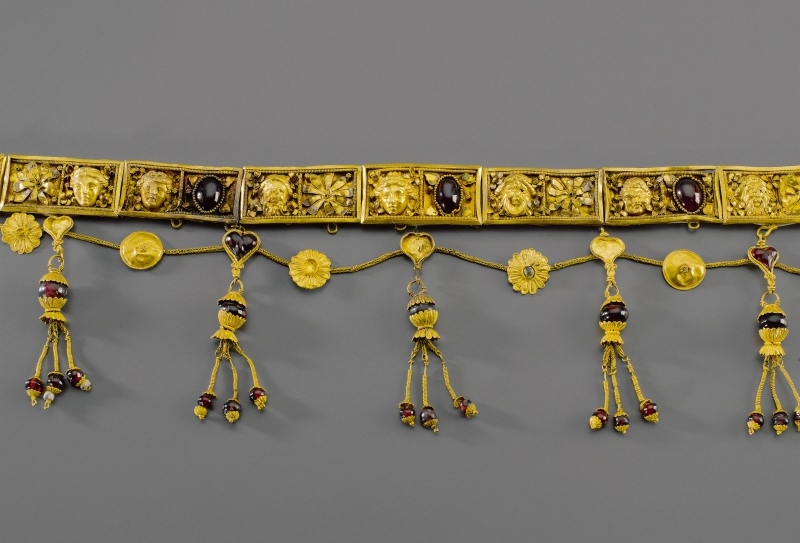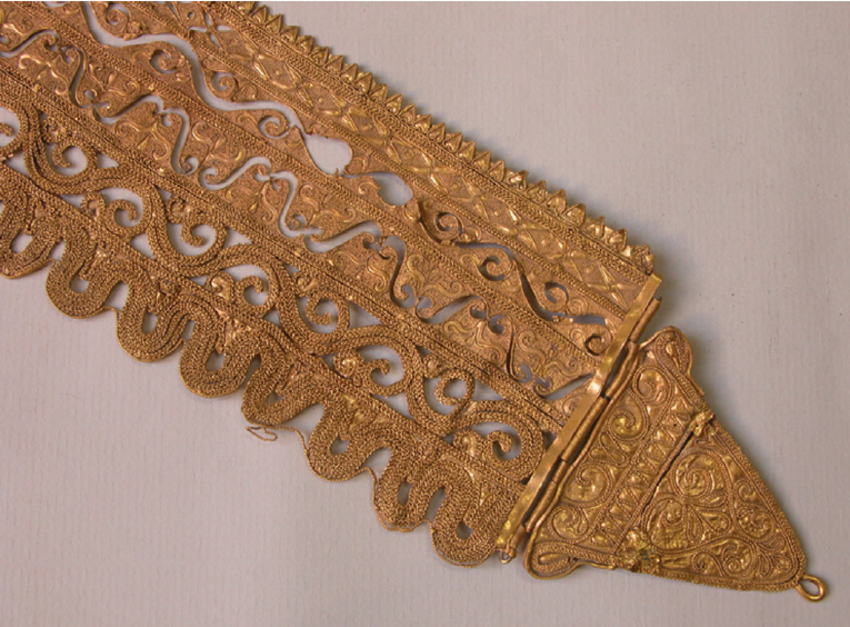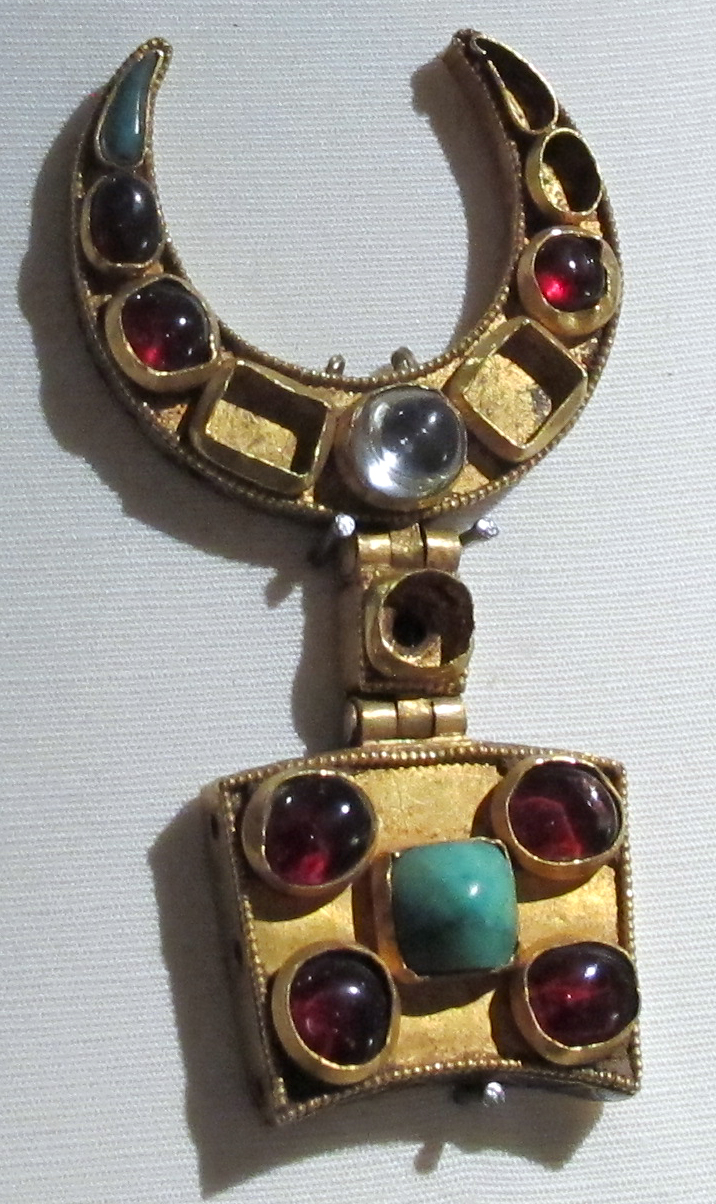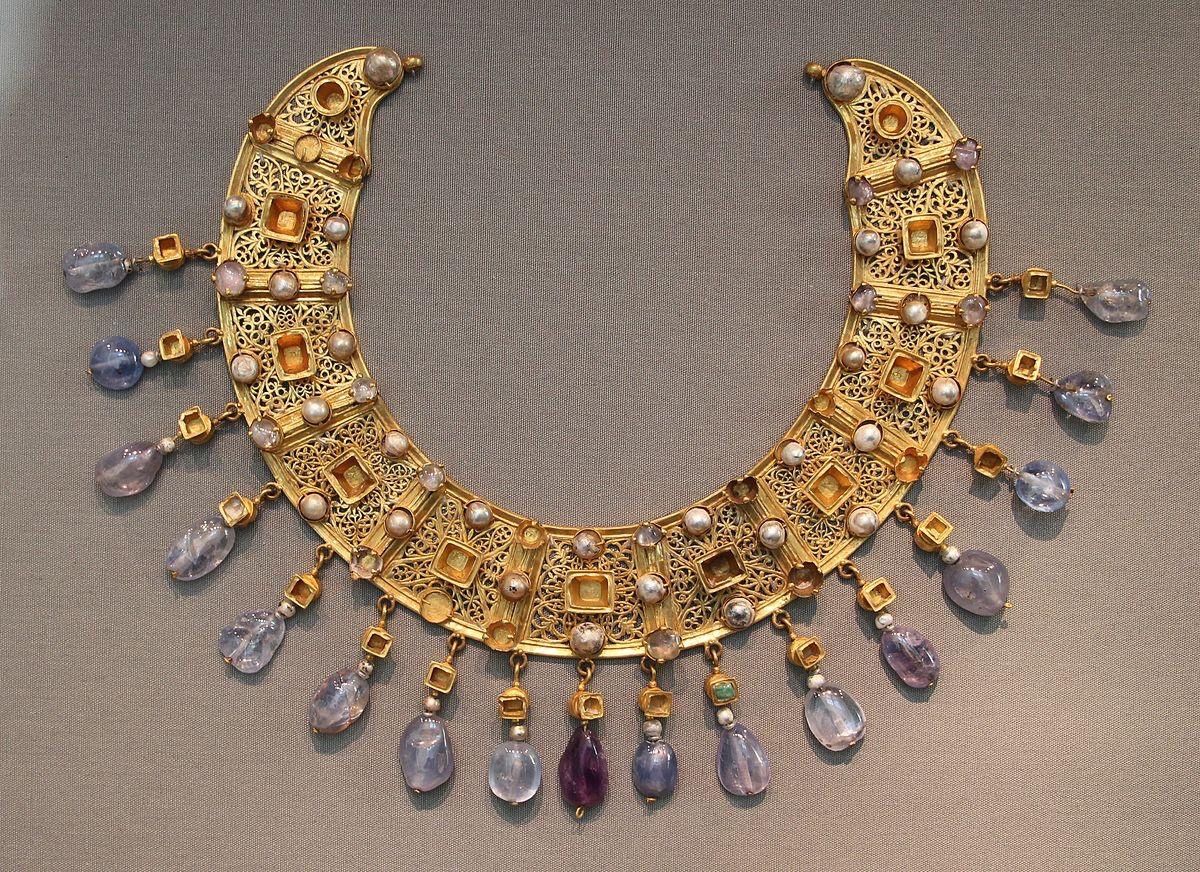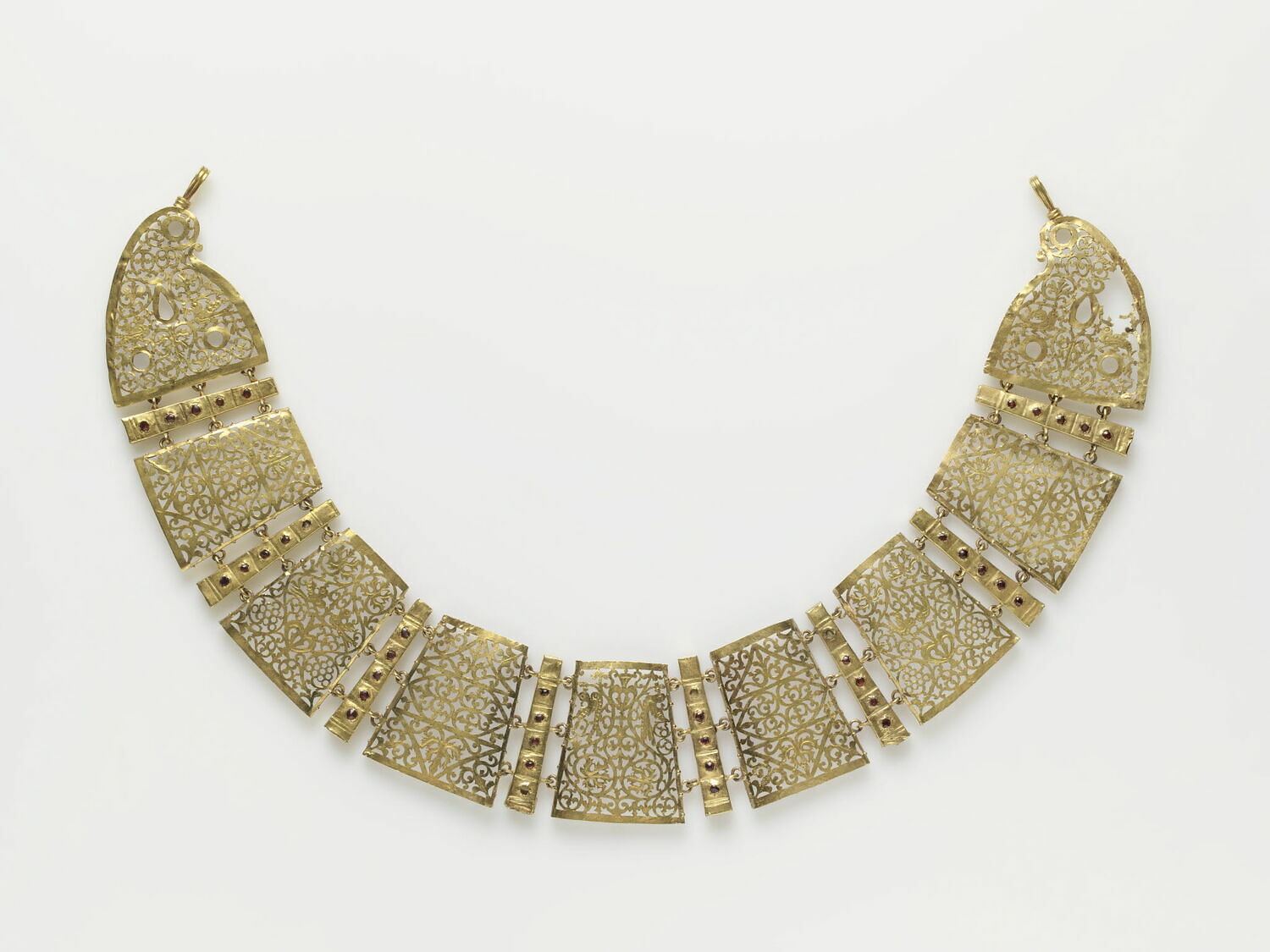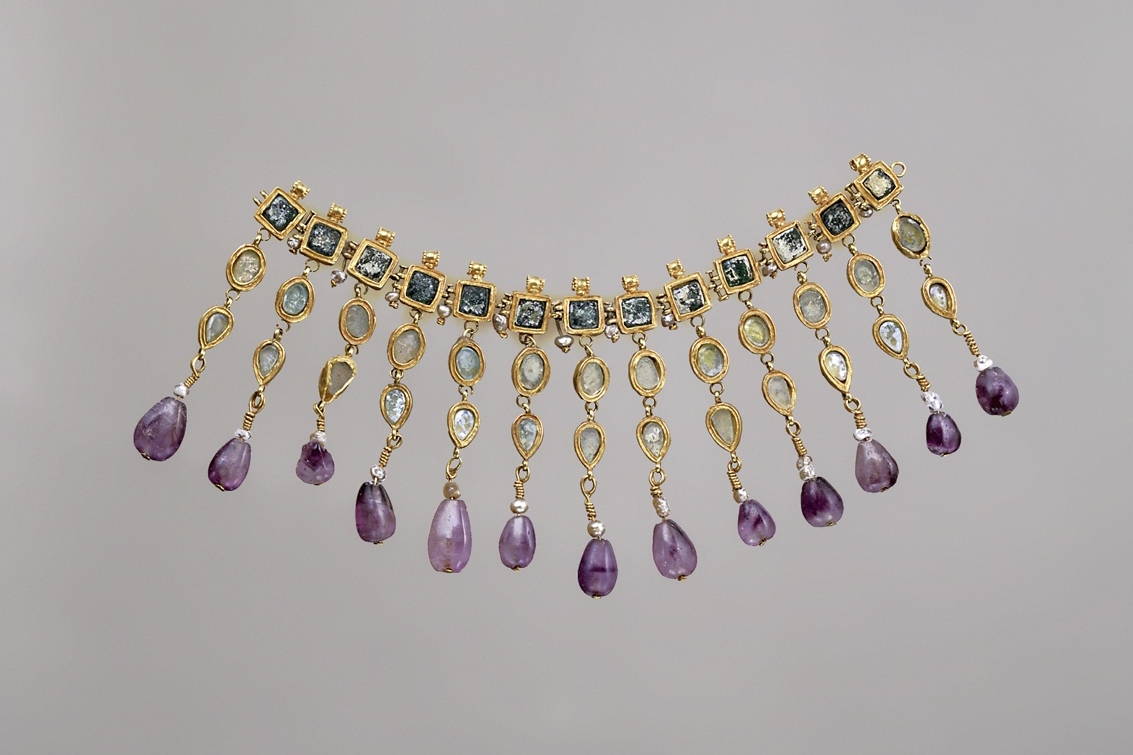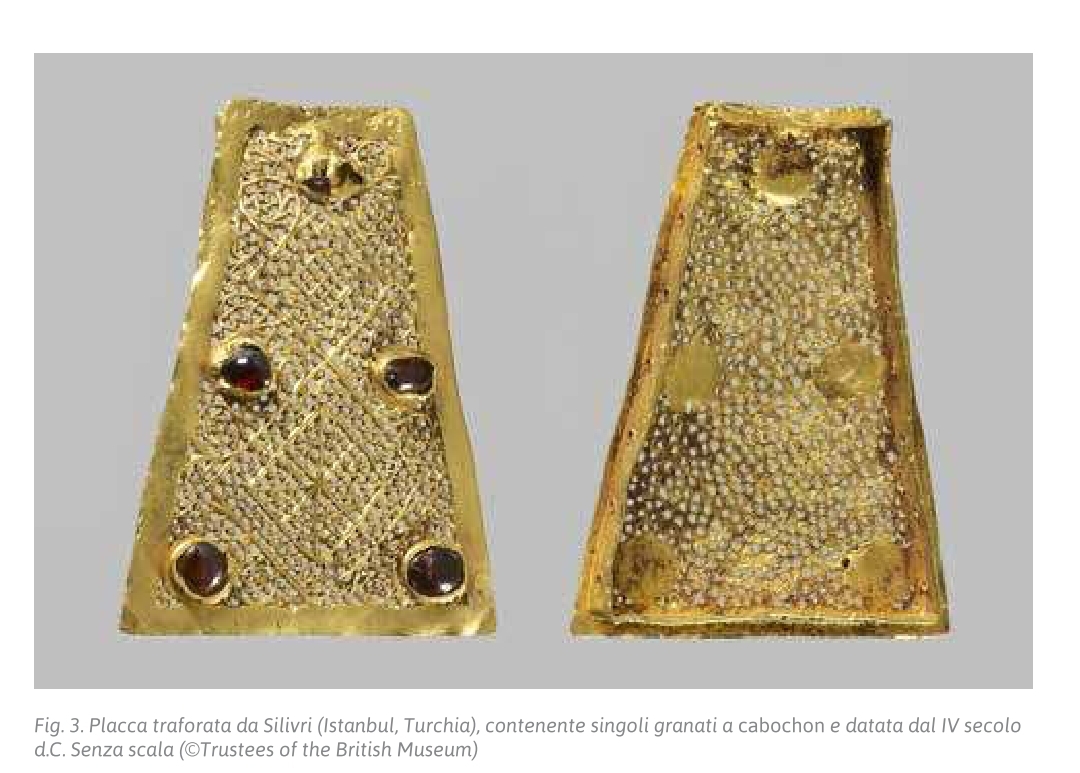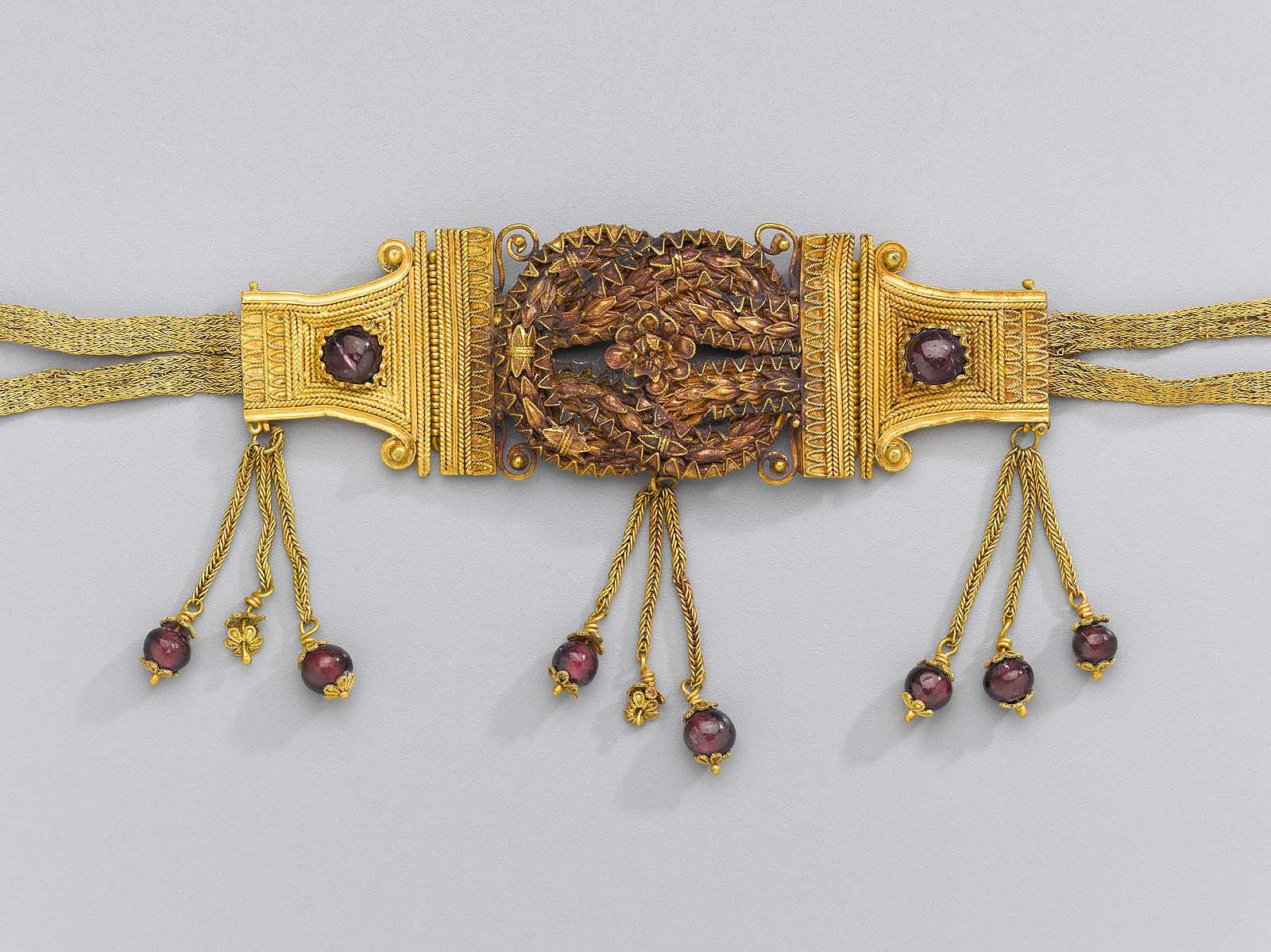Three Sections of a Necklace Set with Cabochons
Early Byzantine, late 4th century
gold and gems
Dumbarton Oaks BZ.1975.7 http://museum.doaks.org/objects-1/info/27475
B. Deppert-Lippitz, “Late Roman Splendor: Jewelry from the Age of Constantine,” Cleveland Studies in the History of Art 1 (1996): 30-71, esp. 62-63, 67, fig. 25, 26a-b.

“Certain late antique images of well-dressed women depict them wearing a necklace in the shape of a broad collar, as in the early fourth-century mosaics from Piazza Armerina in Sicily. Surviving examples of such necklaces are exceedingly rare, so these three fragments, probably once part of such a necklace, are precious specimens indeed.
In this case, there may have been eighteen or twenty sections, each combining four pierced-work rectangles into a gradually flaring trapezoid. Each section includes a cabochon set first with an emerald at the top, followed by a pearl, another emerald, and finally an oval amethyst. The goldsmith reinforced the trapezoid from behind with gold straps (visible wherever a stone is missing) and then gave the piece depth by attaching it to a lower trapezoid by the use of struts of fine braided wire. The small garnet at the top right corner of the most complete piece is set in a goblet-shaped piece that may have been used to hinge the sections together.
J. Hanson”




